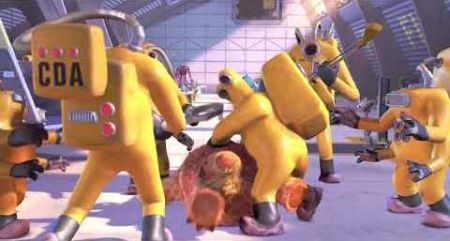Fire drill
Fire drill
/ˈfʌɪə drɪl/ (n.)
1. Management: That unexpected catastrophe that is certain to bugger up your weekend.
|
Office anthropology™

|
It will start with clear and present danger (albeit apprehended through the foggy beer goggles of war, confusion and miscommunication from panicked people in ops); it will gradually suck in more and more people across the organisation (legal, litigation, compliance, senior relationship management) to a point where:
- (a) it becomes so large that the combined mass of important people creates a Schwarzschild radius and it collapses in on itself (the “Bang scenario”) or
- (b) it becomes so dispersed, and its entropy so great, that it fizzles out towards some kind of boredom heat death as it becomes clear that neither the legal terms so patiently negotiated, the firmwide policies so compendiously documented or the common-sense so parsimoniously rationed, has any real prospect of overriding the dictates of keeping the client happy (the “whimper scenario”).
As in so many avenues of modern life — well, mine, anyway — whimpers outnumber bangs by a proportion large enough to make the “whimper” scenario all but certain, but not quite certain enough that the “bang” risk can safely be ignored from the get-go.
Even though — nay, because — they threaten our very existence, bangs are far more fun to be involved in, and dealing with them is fully life-affirming — unless deep down you know they are really just jumped-up little whimpers. Which of course, by immutable rotation of the heavenly dials, they will be.
So you have to go through the motions for nothing. Hence, fire drills are a regular part of commercial life.
Parents of toddlers in 2001, who thus have that splendid motion picture Monsters, Inc. burned on their brains, know a “bang-disguised whimper” as a “2319”.
2. Office ennui (archaic, falling out of use in the “new normal”): An actual fire drill: the Friday afternoon clarion call over the Tannoys that declares all is well with the world — even the building’s fire alarms are working — and it is time for yon wildebeest to start their slow stampede for the exits.
Fire drills of this kind are a fun interruption to an all-hands conference call — especially one that is getting a bit tasty — as they function like a cold shower where everyone has to pause, fuming, for about four minutes while Patricia Hodge goes through her pre-recorded motions; intoning first that this is a drill, and you should all ignore what is about to happen and get on with your work; then that this isn’t a drill — the building is on fire, you must immediately leave without using the elevator or collecting your belongings; and then a reminder that what just happened was a drill, you were right to ignore it, but it is stopping being a drill now, so from now on you do have to pay attention, until the next time you are told don’t have to.
There is a story, passed now into folklore, that an in-house legal eagle at JPM and her favourite lawyer at Linklaters would frequently have conversations so long that they would span both the JPMorgan fire drill, at 1030 in the morning, and the Linklaters one, at four in the afternoon.
In any case, this kind of fire drill is, of course, usually followed by a fire drill in the first sense, meaning that despite all indications to the contrary your weekend is wrecked after all, and almost certainly on account of a damp squib.
Once a in a blue moon someone actually pushes the fire alarm button — or some burning toast in the kitchen sets off the smoke alarms — and the whole building actually has to go through the motions of evacuating the building for real. The post-Covid new normal, where coaxing employees to work at all is a job, and getting them to come to the office is nigh impossible, presents a quandary: what happens to home workers in a real-life fire alarm? How are they supposed to know there is a fire drill? What are they supposed to do? Should they go and stand outside? Should someone put on a high-vis jacket and march round the loft inspecting it for errant children?
Eheu.